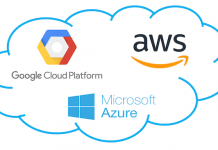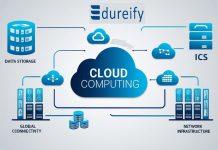Cloud computing is a technology that enables the delivery of computing resources over the internet. This includes servers, storage, databases, networking, software, and analytics, among others. With cloud computing, users can access these resources on-demand without having to maintain them locally.
Cloud computing is typically divided into three service models: Infrastructure as a Service (IaaS), Platform as a Service (PaaS), and Software as a Service (SaaS).
In IaaS, users rent computing infrastructure such as virtual machines, storage, and networks. PaaS provides a platform for developers to build and deploy applications without the need to manage the underlying infrastructure. SaaS, on the other hand, provides a fully functional software application that users can access over the internet without needing to install it on their local devices.
Cloud computing offers many benefits, including increased scalability, flexibility, and cost-efficiency. It allows organizations to focus on their core business rather than managing IT infrastructure, and enables users to access applications and data from anywhere with an internet connection.
Elements of cloud computing
There are several key elements of cloud computing that make it a powerful technology for businesses and individuals. These elements include:
-
On-demand self-service: Cloud computing provides users with the ability to provision computing resources such as servers, storage, and applications on demand, without the need for human interaction with service providers.
-
Broad network access: Cloud computing resources are accessible from anywhere with an internet connection, making them available to a wide range of users and devices.
-
Resource pooling: Cloud computing resources are shared across multiple users and applications, allowing for efficient use of resources and economies of scale.
-
Rapid elasticity: Cloud computing resources can be scaled up or down quickly in response to changes in demand, providing users with the ability to easily adjust their computing resources as needed.
-
Measured service: Cloud computing providers offer a pay-per-use model, where users only pay for the resources they consume, allowing for cost-effective use of computing resources.
-
Service models: Cloud computing is typically offered in three service models: Infrastructure as a Service (IaaS), Platform as a Service (PaaS), and Software as a Service (SaaS), each offering different levels of abstraction and management of computing resources.
-
Deployment models: Cloud computing can be deployed in a variety of ways, including public, private, and hybrid clouds, allowing users to choose the deployment model that best meets their needs for security, control, and cost.
Overall, these elements of cloud computing enable businesses and individuals to access computing resources more efficiently, at lower cost, and with greater flexibility than traditional IT infrastructure.
Advantages of cloud computing
Cloud computing offers several advantages to businesses and individuals, including:
-
Scalability: Cloud computing resources can be quickly and easily scaled up or down to meet changing demands. This allows businesses to quickly adapt to changing market conditions and manage spikes in traffic without investing in additional hardware.
-
Flexibility: Cloud computing allows businesses to access computing resources from anywhere with an internet connection, making it easier for remote workers to collaborate and work together.
-
Cost savings: Cloud computing eliminates the need for businesses to invest in and maintain their own hardware and infrastructure. Instead, they pay for what they use on a subscription basis, reducing capital expenditure.
-
Security: Cloud providers typically have sophisticated security measures in place to protect data and applications from cyber threats. Additionally, data is often backed up automatically, reducing the risk of data loss due to hardware failure.
-
Disaster recovery: Cloud computing enables businesses to easily recover from disasters by quickly restoring data and applications from backups stored in the cloud.
-
Collaboration: Cloud computing provides a platform for collaboration between teams and individuals, allowing them to share documents and data easily.
-
Access to new technologies: Cloud providers are constantly updating their services with the latest technology, giving businesses access to new features and functionality without the need for expensive upgrades.
Overall, cloud computing offers businesses and individuals a more flexible, cost-effective, and secure way to access computing resources, enabling them to focus on their core business activities while leaving the management of IT infrastructure to the cloud provider.
Impact of Cloud Computing on Software Development
Cloud computing has had a significant impact on software development in a number of ways:
-
Increased Collaboration: Cloud computing provides a platform for collaborative software development by enabling team members to access and work on software projects from anywhere with an internet connection. This has made it easier for developers to work together on projects, resulting in faster development cycles and better collaboration.
-
Greater Flexibility: Cloud computing provides developers with access to a wide range of tools and services that can be used to build and deploy software. This has made it easier for developers to build and deploy applications quickly and with greater flexibility, allowing them to meet changing user requirements more effectively.
-
Cost Reduction: Cloud computing eliminates the need for developers to invest in their own hardware and infrastructure. This has reduced the costs associated with software development and made it more accessible to businesses of all sizes.
-
Improved Testing: Cloud computing provides developers with access to a wide range of testing tools and services that can be used to test applications at scale. This has made it easier for developers to identify and fix issues before they reach production environments.
-
Increased Security: Cloud providers typically have sophisticated security measures in place to protect data and applications from cyber threats. This has made it easier for developers to build and deploy applications with greater security.
-
Rapid Deployment: Cloud computing enables developers to deploy applications quickly and easily, reducing the time it takes to get applications into production environments.
Overall, cloud computing has had a transformative impact on software development, enabling developers to build and deploy applications more quickly, cost-effectively, and securely than ever before.
Master Your Coding Skills with BootSelf AI
If you're looking to enhance your coding abilities and upskill in artificial intelligence, look no further than the BootSelf AI app. This innovative platform provides AI-based coding lessons that are tailored to your individual learning pace.
Available on both iOS and Android, you can download the BootSelf AI app and start mastering coding skills today:









